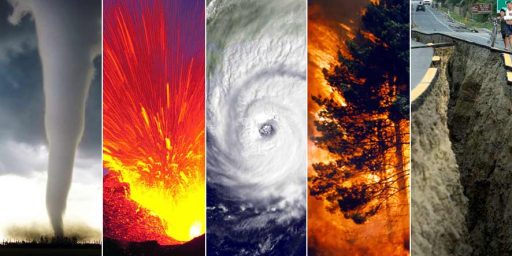Poor Infrastructure Hampers Tsunami Relief
Many Thousands Cut Off From Relief (WaPo, A01)
U.N. relief officials warned Monday that tens of thousands of people affected by the earthquake and tsunami in South Asia have not received help and that some are dying because ruined roads and bad communications are preventing the distribution of supplies.
International relief groups have delivered only one-eighth of the 400,000 tons of food flown into affected parts of Indonesia, said Michael Elmquist, chief of the U.N. office coordinating the rescue effort in the country. He said the delivery of lifesaving food and medicine has been slowed by impassable highways, severed telecommunications and airports unable to accommodate enough relief flights. “I have witnessed a build-up of aid on a scale that has never happened before,” Elmquist said. “This effort has been hampered very seriously.”At the United Nations, Jan Egeland, the U.N. emergency relief coordinator, said it was impossible to estimate how many people have not received emergency aid since the Dec. 26 earthquake that generated the tsunami off the northern coast of Indonesia’s Sumatra island. “My heart goes out to those along the Sumatra coast, because we’re not even there, and those were the hardest hit,” Egeland said. “Are they tens of thousands, are they hundreds of thousands that we’re not reaching? I don’t even know.”
Egeland estimated that fatalities from the catastrophe now exceed 150,000. The official death count is about 139,000, including more than 94,000 in Indonesia and 30,000 in Sri Lanka, the island nation off the southern tip of India. The tsunami killed people in coastal areas in nine other countries around the Indian Ocean. U.N. officials said that throughout the region about 500,000 people may have been seriously injured and millions left homeless.
Tragic if unsurprising. Poor infrastructure is a fact of life in the Third World and even good road and communication systems are going to suffer serious damage from such a huge natural disaster. The combination of the two is simply catastrophic.





“Unsurprising” is exactly the right word. Given the fact that so much of the damage occurred on islands and in coastal areas, why wasn’t the UN immediately working on the use of ships and boats to carry the supplies? Greater lift capacity than aircraft and if the right hulls are used, they can get supplies right up to the affected areas. The U.S. is sending an amphibious task force for this very reason… the UN is way behind the power curve and likley to remain so.
Sending ships with supplies takes weeks to arrange. The need is immediate and that’s why airplanes are being used until the ships can get there. What other country out there in the region has the amphibious and helicopter lift capability besides the US? Maybe the Aussies have a ship or two but that’s about it.